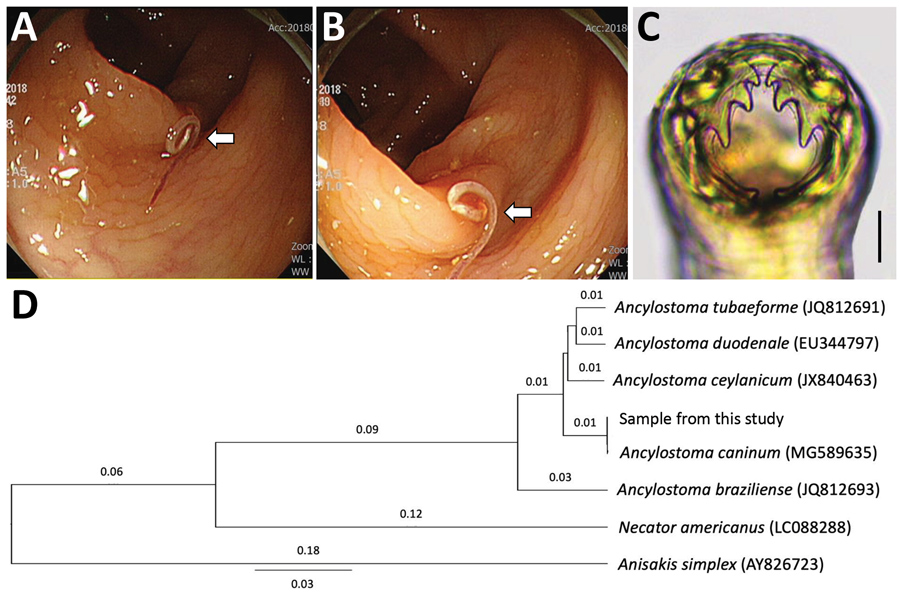Volume 26, Number 1—January 2020
Research Letter
Rare Case of Enteric Ancylostoma caninum Hookworm Infection, South Korea
Figure

Figure. Analysis of a worm from a 60-year-old man in South Korea that was identified as Ancylostoma caninum, the dog hookworm. A, B) Colonoscopy images showing a moving threadlike nematode in the mucosa of the descending colon. This nematode (arrows) is seen hooking its head into the colonic mucosa. C) The head part of the worm, showing its characteristic morphology of 3 pairs of teeth in the buccal cavity, by which it could be morphologically identified as A. caninum. Scale bar indicates 0.1 mm. D) Phylogenetic tree based on nucleotide sequences of the internal transcribed spacer 1 region and 5.8S rDNA of the worm from this study in comparison with various hookworm species deposited in GenBank (accession numbers indicated in parentheses), inferred by using the UPGMA method. MEGA-X (https://www.megasoftware.net) was used as the software. Scale bar indicates evolutionary distance.